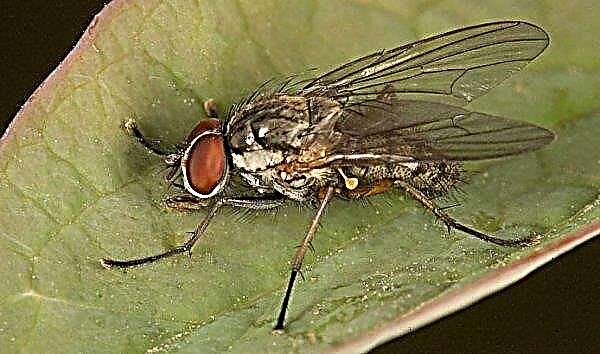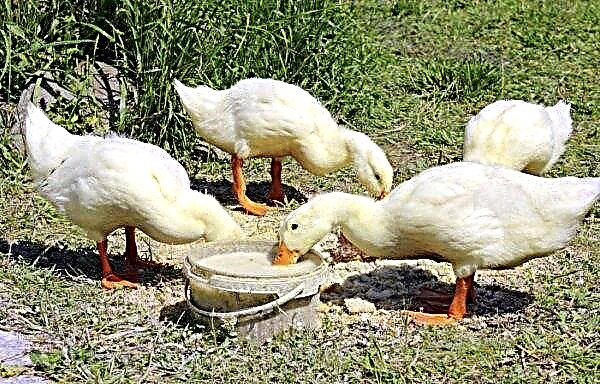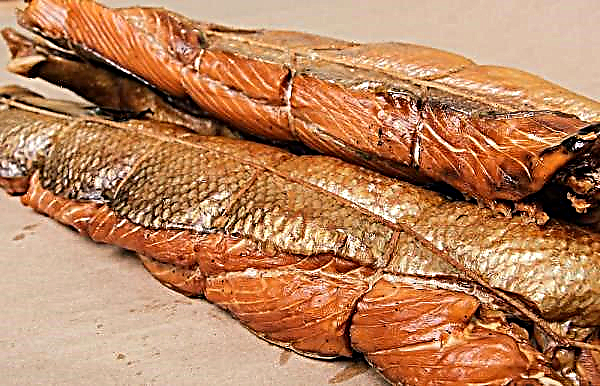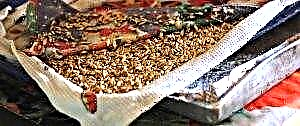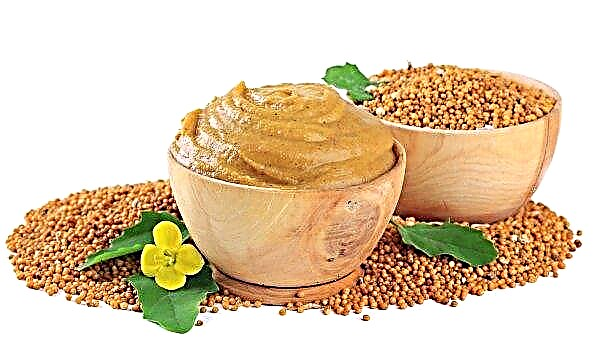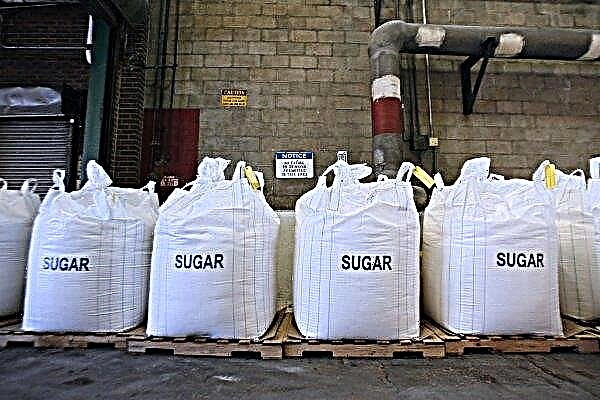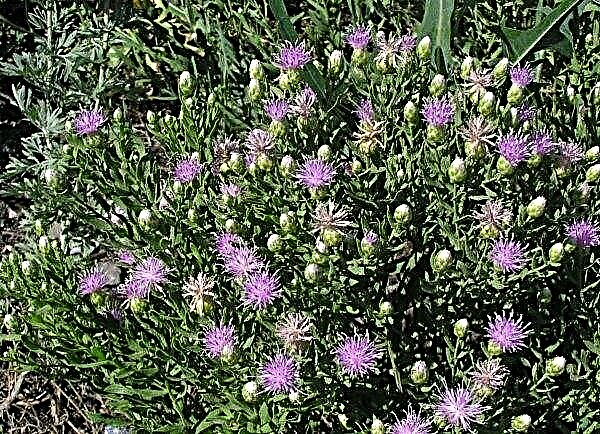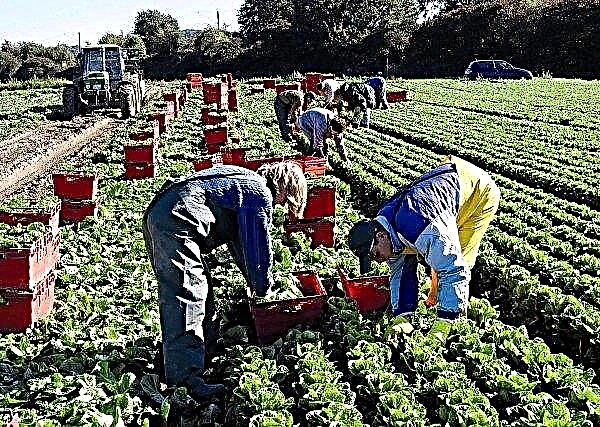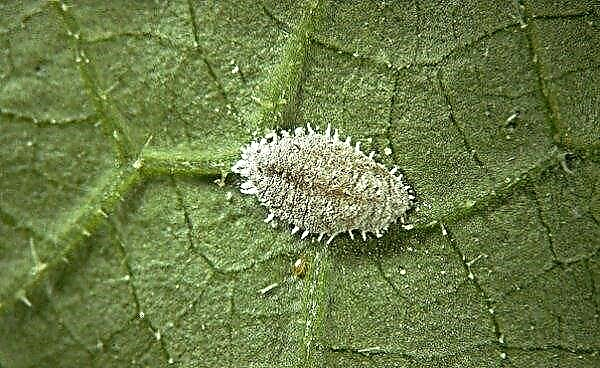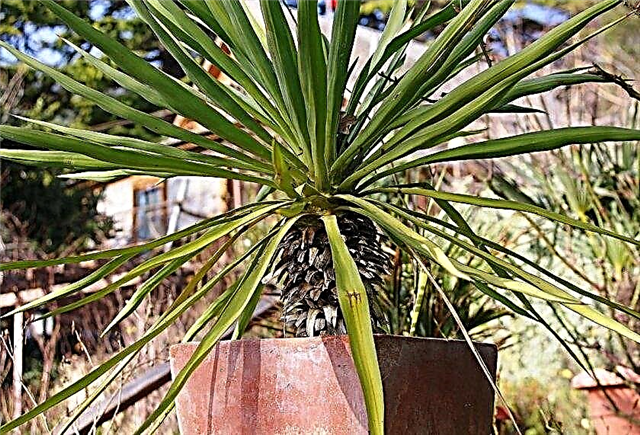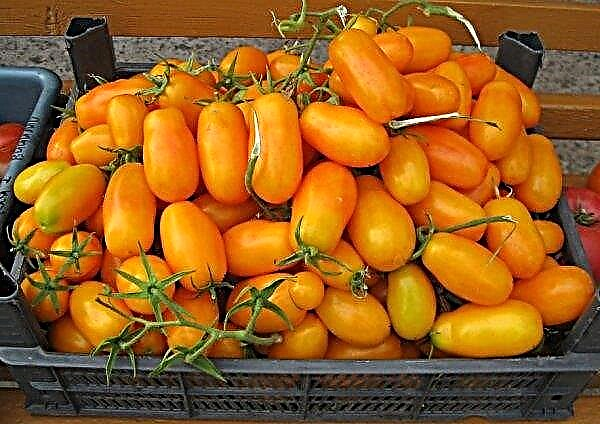Sante is a variety with oval, large tubers with smooth, light yellow skin and pale cream flesh. The variety is characterized by medium early ripening and good yield. About the features of Santa and the techniques of its cultivation, read in this review.
Description and characteristic
Santa was bred in the Netherlands in 1971. The variety has excellent technical and taste characteristics and is therefore grown in most European countries.
Sante tubers are approximately the same size, weighing 90–120 g. From one bush, you can collect up to 20 kg of high-quality starchy potatoes. Accordingly, the yield per hectare reaches 550–570 c.
Tuber characteristics:
- oval shape;
- light yellow peel;
- creamy white flesh;
- the average size;
- dense consistency.
Photo gallery
The variety is highly resistant to late tuber damage, so its durability is - 92%. Sante is also resistant to dry rot and scab. But it has a rather low resistance to late blight, so it needs to follow the rules of planting and prevention of leaf diseases.Taste qualities
The excellent taste and high starch content (up to 14%) allow Santa to use for the preparation of high-quality crispy chips and french fries. Potatoes do not boil during cooking and do not darken.
Ripening period and productivity
Sante belongs to mid-ripe varieties. Harvest is expected for 80–90 days. Before harvesting, it is necessary to determine the state of maturity of the potato, the condition of the peel and the quality of the tubers. The main requirement for harvesting is a firm, dense peel. This condition will occur 2-3 weeks after drying or removing the tops.
Important! Rub 2 tubers against each other. If the peel remains intact and intact, then you can dig a crop. In addition, the extra time spent in the ground increases the risk of infection by fungi or pests.
Advantages and disadvantages
- Grade advantages:
- high productivity (up to 570 kg / ha);
- excellent keeping quality (92%);
- excellent marketable appearance;
- high taste characteristics;
- resistance to scab, rot and nematodes;
- seed stability;
- the variety is adapted to drought;
- practically not affected by wireworm and rhizoctonia (like all early varieties).
- A feature of the variety is its love of heat. And it also determines its shortcomings:
- does not tolerate frost;
- poorly fruitful if the summer is cold;
- has average resistance to late blight and other diseases affecting the leaves.
Planting and growing potatoes
Planting potatoes includes:
- preparation of seed material;
- presowing soil preparation;
- planting potatoes.
 When planting fertilizers must be applied. It is advisable to introduce manure as a source of potassium and add nitrogen for the good development of the root system and stems. A set of measures for subsequent cultivation consists of watering, hilling, periodic fertilizing and pest control.
When planting fertilizers must be applied. It is advisable to introduce manure as a source of potassium and add nitrogen for the good development of the root system and stems. A set of measures for subsequent cultivation consists of watering, hilling, periodic fertilizing and pest control.Did you know? Some farmers practice coating Sante’s early potato crops with agrofibre or plain film to create the right temperature for the development of tubers (around + 22 ° C). But as soon as tuberization begins or the temperature under the film becomes higher than + 28 ° C - it is removed.
Optimal landing times
The national calendar of any country advises its best dates for planting. All of them relate to early spring. But Sante is a heat-loving variety, so it is worth planting it when the air temperature in the afternoon is at + 14 ° С.
Check out the growing features of other mid-early potato varieties:
Crop rotation rules
Basic crop rotation rules:
- The full cycle should be at least 4 years: the cultivation of the same vegetable in one area contributes to the conservation and reproduction of pests.
- Avoid soil compaction. This is easier to do if you grow ground cover crops in front of potatoes: buckwheat, mustard, clover, annual bean or grain crops and others. Their roots well loosen the soil, and essential oils inhibit the development of pests.
- Plowing heavy clay soils must be carried out in the spring before planting.
- After the potato, quite a lot of nitrogen remains in the soil. In order not to lose it, it is recommended to conduct an autumn planting of cereal or other herbs. They will absorb soil nitrogen, and, overheating in the soil over the winter, will provide your vegetables with natural fertilizers.
- After potatoes in the fall, it is worth planting legumes or winter grains. They will become wonderful green fertilizers.
- Do not plant clover after root crops - this increases the risk of contamination of future crops with wireworms.
- You can not plant corn in front of potatoes - it increases the risk of developing scab.
- Sante is demanding on food. Therefore, it must be provided with nutrients during planting.
- After the early potato varieties, some farmers practice planting vegetables in order to harvest another crop per season.

Did you know? The largest number of potatoes grown on one plant was 167 kg (370 pounds)! The record was set in 1974 by the Englishman Eric Jenkins.
Soil requirements
The type of soil affects the shape and overall appeal of the tubers. On lighter soils, most tubers acquire a beautiful rounded shape, as well as flatter eyes. On heavy, slowly warming soils, tubers are flattened, but they are less susceptible to scab.
Soil preparation:
- Digging a plot for planting potatoes, it is necessary to break up large clods of earth, since they slow down growth and deform tubers.
- Be sure to remove weeds.
- If the soil is heavy, it is advisable to dilute the soil with bulk material to make it more airy.
- Light soils (sand, sand clay) are cultivated only in spring by applying organic fertilizers (compost or manure).
 Sante prefers light soils with an even water supply and an acidity level of 5.5 to 7 pH. The variety is almost insensitive to drought, but does not tolerate a long period of cold. Therefore, for landing, they select a sunny area on a hill.
Sante prefers light soils with an even water supply and an acidity level of 5.5 to 7 pH. The variety is almost insensitive to drought, but does not tolerate a long period of cold. Therefore, for landing, they select a sunny area on a hill.Did you know? In a day, people eat about 1 billion potatoes. This means that it is present in the menu of every seventh inhabitant of the Earth.
Preparing planting material
Be sure to use only healthy planting material for planting, without signs of pest damage. Tubers with quality defects: black scratches (scab), rot, must be removed, and the rest of the seed material must be processed before planting.
Seed preparation:
- tubers must be germinated before planting;
- Santa is not advisable to cut into pieces, as this leads to fewer sprouts and, accordingly, weaker bushes with a low yield.
 Preparation of seed material begins in March 2-3 weeks before planting in the soil.
Preparation of seed material begins in March 2-3 weeks before planting in the soil.Landing technology
The ideal landing date varies greatly depending on the climatic conditions of the region. The most important factor determining the date is the temperature of the soil. It should be at least +6 ... + 8 ° C for previously sprouted potatoes. The soil should be fairly dry.
Landing Rules:
- Planting is carried out to a depth of 20–30 cm with a distance between tubers of about 30–35 cm.
- The distance between the 2 trenches of potatoes should be about 75 cm. If the step of the trenches is increased, then the distance between the tubers can be made smaller. Larger potato rows with an earthing up - this is the best preservation of moisture, excellent aeration, the best supply of nutrients, as well as reducing the risk of late blight, which is prone to the Sante variety.
Landing technology:Important! The larger tubers the variety forms, the less distance between them is required.
- At the bottom of the trench should be loose soil.
- Planting material is laid on it.
- A layer of soil mixed with rotted manure or compost is placed on top.
- Urea is added.
- They cover the trench with a layer of ordinary soil.

Potato care after planting
After planting, potatoes need watering, timely top dressing and hilling with weed removal. Removing weeds leaves more nutrients for the tubers and makes harvesting easier.
The ideal time to kill weeds is before the weeds become visible. Therefore, many farmers practice autumn sowing of green manure on the site. These are integumentary plants whose root system loosens the soil, improves its aeration and inhibits the growth of weeds.
Hilling is an obligatory agrotechnical measure. The formation of the embankment around the bush is necessary in order to increase the volume of the root system and, accordingly, the volume of the formed crop. Hilling allows you to increase productivity by almost 2 times. It should be carried out for the first time when the shoots reach a height of 10-15 cm. The second hilling is repeated after 3 weeks.
Growing potatoes requires a lot of potassium and nitrogen in the soil. Fertilizers can be of both organic and synthetic origin. An excellent supplier of potassium is manure, which is desirable for planting (5-10 kg per 1 m²).Important! It is advisable to spud potatoes in the evening when the leaves are arranged vertically. So, it is less likely that you will cover them with earth, especially with mechanized hilling.
 In terms of hectare, the rate of manure is 25-30 tons. Potassium is important for starch accumulation. In addition, it improves shelf life and reduces the number of damaged tubers. The introduction of nitrogen is relevant for the first 50 days after planting. At this time, tubers form. The application volume is from 80 to 140 kg / ha.
In terms of hectare, the rate of manure is 25-30 tons. Potassium is important for starch accumulation. In addition, it improves shelf life and reduces the number of damaged tubers. The introduction of nitrogen is relevant for the first 50 days after planting. At this time, tubers form. The application volume is from 80 to 140 kg / ha.Water supply is critical to the crop. This is especially important 3 weeks after flowering and should be maintained until the crop ripens. During the first 3 weeks after planting, spring moisture is sufficient in the ground. If this is not the case, it would be better to water the potatoes.
Basic watering rules:
- Dry soil before the first hilling contributes to a wider development of the root system.
- A large amount of water can wash away nutrients deep into the soil so that the roots cannot reach them. Therefore, you need to water it by moistening the soil no more than 40 cm deep.
- After the start of stalk growth and elongation of the stem by earthing up, the soil should be moist to ensure the formation of uniform tubers. To maintain moisture, crops are recommended to mulch.

Diseases and pests of the variety
In time to recognize the disease or the action of pests - means to take action in time and preserve the crop.
The main signs of disease:
- brown spots on the leaves, partially oily;
- fungus, plaque, black / white spots on the underside of the leaf;
- spots on the stems.
Good results are shown by the prevention of diseases in the early stages of development. Initial infection is possible for low-quality planting material. Therefore, potatoes are recommended to be treated with fungicides from fungi before planting. Prevention measures:
Prevention measures:
- Use only healthy tubers.
- Late and early varieties grow in different areas. Do not mix them.
- Use siderata plants in the aisles.
- Destroy infected plants and weeds no less than 3 m from potato crops.
- Apply spraying with brilliant green (1 teaspoon per 10 liters of water). The basic substance is copper ions. They have an active bactericidal effect on crops. Copper ions will be released each time the leaves become wet, thereby providing permanent protection to the potato. This will protect crops from all types of bacterial infection, including late blight.
The larvae of the Colorado potato beetle can "sleep" in the ground for several years. Therefore, it is not recommended to plant potatoes in the same area earlier than after 3 years.Did you know? The Colorado potato beetle and its larvae acquire a unique orange color because they do not digest the carotene contained in the leaves. Accumulated in body tissues, carotene gives the beetle an orange hue.
The Nutcracker Beetle and its Larvae - wireworms leave round holes on the tubers with a sharp contour depth from 1 mm to through. The life cycle of a nutcracker is 3-5 years. Larvae cause maximum damage for 2-3 years of development. The best way to fight is to plant mustard in the autumn. This pest does not tolerate the essential oils that it contains. Before frosts, the site is dug up, and the green grass mass enters the soil to exert a gradual effect on the wireworms. The variety is resistant to scab. But you can find such tubers when preparing seed. The disease manifests itself in the form of holes with a black ragged edge filled with dry tissue. Affected tubers cannot be used for new sowing. As a preventative measure, the remaining tubers are treated with the Prestige preparation before planting, which has both insecticidal and bactericidal properties. In an aqueous solution of the drug tubers are soaked for 8 hours. The concentration of the solution must be maintained according to the instructions on the packaging. In this way, you will protect the seed against wireworms, grains, scab and root rot.
The variety is resistant to scab. But you can find such tubers when preparing seed. The disease manifests itself in the form of holes with a black ragged edge filled with dry tissue. Affected tubers cannot be used for new sowing. As a preventative measure, the remaining tubers are treated with the Prestige preparation before planting, which has both insecticidal and bactericidal properties. In an aqueous solution of the drug tubers are soaked for 8 hours. The concentration of the solution must be maintained according to the instructions on the packaging. In this way, you will protect the seed against wireworms, grains, scab and root rot.
Features of harvesting and storage of crops
If dry sunny weather is established, and the stems of the bushes wilted, then the time for harvesting comes. The tubers will need about 10 days to harden the peel after the vegetation has stopped. If the weather is damp, then the dug tubers must be laid out in a dry room to dry for several hours before being stored. Store potatoes in small plastic or wooden boxes in 2-3 layers. The optimum storage temperature is +2 ... + 5 ° С with ordinary air humidity (60–70%). The shelf life of the variety is 92%.
Store potatoes in small plastic or wooden boxes in 2-3 layers. The optimum storage temperature is +2 ... + 5 ° С with ordinary air humidity (60–70%). The shelf life of the variety is 92%.
Observing these simple rules for carrying out activities for the care of potatoes, you will get a good harvest on any soil. The variety is quite unpretentious. But it is better to grow it in the southern regions with well-heated soil.

